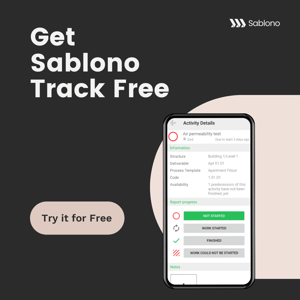No other technological advancement has changed our daily life more fundamentally in the last 20 years than the computer and the internet. While the trend started in the late 80s and early 90s mostly based on geeks and nerds, by now it has absorbed most people living in the western world and beyond. As part of the trend we witnessed an ever-growing rate of digitalization, first in our private life (when was the last time you bought a CD?) but lately also in our jobs and work life.
Nowadays, Industry 4.0 is a catchphrase often used and referred to. It describes the transition of whole industries towards digitalization. While other fields have already been working on the topic for quite some time now and show strongly connected automatic manufacturing approaches like the automotive industry, the AEC industry until recently seemed to be lagging.
Of late, it looks like also our industry field is finally picking up speed towards change and digitalization. Most big general contractors have whole departments working on “innovation”, “BIM” or again “industry 4.0”, trying to define company wide strategies to handle upcoming changes. Simultaneously (mostly young) project managers who grew up using modern technology try out and evaluate different solutions and apps hands-on during their running project. They conduct independent trial projects, so to speak, and if they like solutions they will only bring them to the “innovation board” after proving their concepts.
Most of these efforts are focused on digitizing the workflow currently practised in project development. Tons of issues are documented using snagging tools, daily diaries are written using mobile applications, PDF plans are taken to site using tablets or smartphones. While this is understandable since getting to know new digital technologies is a tough task in itself and combining it with rethinking of long-used workflows seems at least extremely challenging, it does nevertheless not necessarily make sense. Let’s try to understand why:
What is the outcome of simply digitizing e.g. issues, daily diaries and plans? Tons of digital data which in most cases means tables but can also be drawings (if e.g. an issue is defined on a floorplan) or photos – in some cases even combinations of all three. What is the problem with that data? It is unstructured – just as unstructured as its analogue “brother” was, so to speak. That means that it will be hard to handle and leverage. You will still have to work very hard to pull information from the pile bit by bit, search by search, to be able to derive valuable insights into your projects state. Don’t get me wrong, it will definitely be easier to handle than rooms and rooms full of binders but I like to think that using a digital system offers way more advantages especially when it comes to automatic progressing of information.
That’s why we at Sablono have tried to come up with a different approach addressing AEC industry 4.0. On our Lean Construction management platform everything is connected to deliverables. Deliverables can be everything – from (prefabricated) components, to rooms or even documents. And you will find those deliverables in your project programme, in visualizations, summary views and in charts. Connected to Deliverables are Activities – each step that needs to be done to complete the Deliverable. You will report progress based on those Activities which leads to a far more accurate progress value for each Deliverable. And, you may also report issues for specific Activities. Because all that information is structured it can instantly be reflected in your project programme or any other summary view on the platform. Thereby Sablono helps you to handle the information collected and to understand the state and potential problems of your project in more detail.
The bottom line is this: Does a software solution like Sablono require some slight changes in your current workflow? Sure. But does it also provide far more value and help you deliver your projects on time and budget more easily than one of the solutions digitizing your current way of working? Definitely. And to put it very frankly – Isn’t it a little unrealistic to think that we can make the most out of new technologies while changing a complete industry by digitizing it without also slightly adapting our own workflow to the new situation? Doesn’t such a fundamental change necessarily also involve our daily work? I personally would not expect otherwise.
Sablono is easier to use than you think and we offer not only a support centre but also fast and friendly customer support using our inApp chat capabilities.


